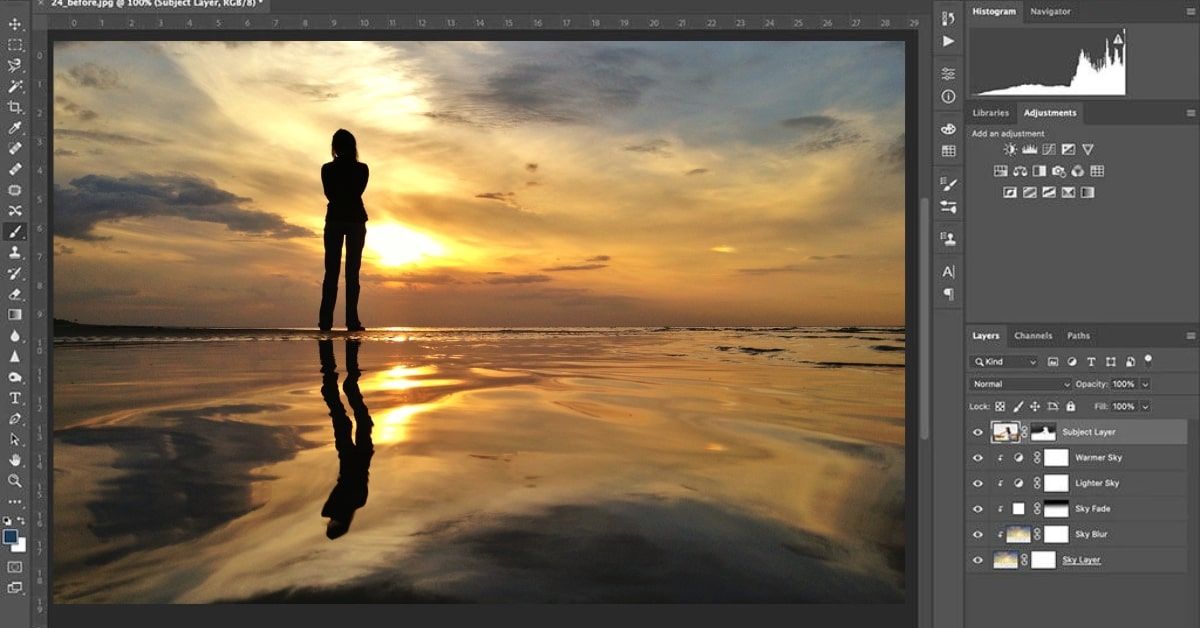Shadows and silhouettes play a captivating role in photography, offering unique opportunities to create dramatic, artistic, and visually compelling images. Understanding the interplay between light, shadows, and subjects is key to harnessing their potential in photography. This article delves into the significance of shadows and silhouettes in photography, techniques to capture them effectively, and how they contribute to creating evocative visual narratives.
Exploring Photography Shadows and Silhouettes
- Understanding Shadows in Photography:
- Shadows in photography are the areas where light is obstructed, creating contrast, depth, and mood within the image. They can accentuate textures, shapes, and emotions.
- Silhouettes: Artistry in Negative Space:
- Silhouettes are dark outlines of subjects against a brighter background, often highlighting their form and creating powerful visual impact through negative space.
- Playing with Light and Shadow Contrast:
- Manipulating light sources and understanding their direction and intensity can help photographers create striking contrasts between light and shadow, adding drama to the composition.
- Using Shadows to Emphasize Emotion:
- Shadows can evoke emotions and add a layer of storytelling to photographs by emphasizing mood, mystery, or drama.
Techniques for Capturing Shadows and Silhouettes
- Backlighting for Silhouettes:
- Positioning the subject against a bright background and exposing to the background creates captivating silhouettes with distinct outlines.
- Utilizing Natural Light Patterns:
- Observing natural light patterns, such as during sunrise or sunset, can create long and dramatic shadows that add depth and interest to the composition.
- Experimenting with Light Sources:
- Playing with artificial light sources like spotlights, streetlights, or directional studio lighting can sculpt and manipulate shadows for desired effects.
- Using Reflectors and Fill Lights:
- Employing reflectors or fill lights helps balance shadows and highlights, allowing for more control over the contrast within the image.
Photography Tips for Shadows and Silhouettes
- Composition and Framing:
- Pay attention to composition and framing to ensure the interplay of shadows and silhouettes contributes to the overall narrative and doesn’t distract from the subject.
- Exploring Different Angles:
- Experiment with different angles and perspectives to capture unique shadow patterns or create dynamic silhouettes.
- Post-Processing Enhancements:
- Use photo editing techniques to fine-tune shadows, adjust contrast, or emphasize silhouettes for a more impactful final image.
Conclusion
Shadows and silhouettes in photography serve as powerful tools for visual storytelling, adding depth, drama, and emotion to images. Understanding their nuances, manipulating light, and experimenting with different techniques enable photographers to create compelling compositions that evoke emotions and engage viewers. By mastering the art of capturing shadows and silhouettes, photographers unlock a realm of artistic expression, enhancing the narrative potential of their images and creating captivating visual stories.
FAQs
How can I enhance the contrast between shadows and light in my photos?
Experiment with different light sources, angles, and exposures to create pronounced contrasts between shadows and light in your images.
Can silhouettes be captured in color, or are they typically black and white?
Silhouettes can be captured in color, but the distinct outlines against a bright background often make them more prominent and impactful in black and white.
How can shadows contribute to storytelling in photography?
Shadows can convey emotions, add depth, or create a sense of mystery, enhancing the storytelling aspect of a photograph.
What are some common mistakes to avoid when capturing shadows and silhouettes?
Overexposure, underexposure, or excessive clutter around the subject are common pitfalls. Ensure proper exposure and declutter the background for a cleaner composition.
This page was last edited on 27 February 2024, at 12:06 pm
